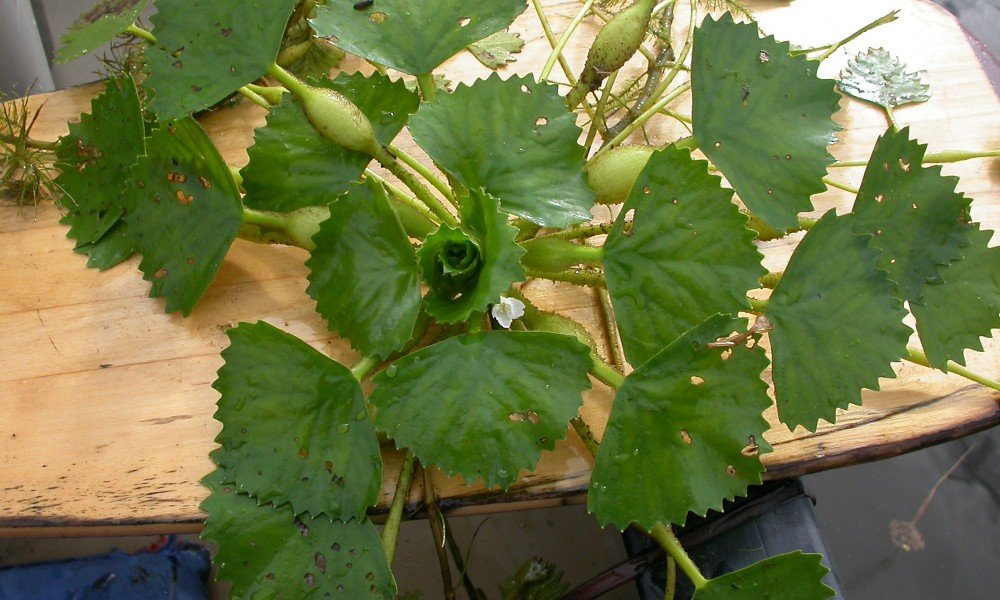Water Chestnut (Trapa natans)
Description
Water chestnut is a submerged aquatic macrophyte with floating and submersed leaves, best suited for shallow, nutrient-rich lakes and slow flowing rivers. Submersed leaves are feathery and are whorled around a spongy stem. The floating leaves, which are triangular with prominent toothed edges, form a rosette at the end of the stem. A small white flower will sprout in the center of the rosette. The plant produces hard, nut like seeds, with four sharp spines that fall to the sediment and produce new plants. Each rosette can produce 10 to 15 seeds, which are capable of overwintering to propogate new individuals the following growing season.
Native Range and Distribution
Like most nonindigenous species, T. natans is native to Eurasia. In North America it has been found as far north as Quebec and throughout the Northeastern United States including NY, PA, MD, DE, MA, VY, VT, and NY. Since 1875 anthropogenic practices through aquaculture and intentional planting have enabled this plant to first colonize natural waters near Cambridge, MA and quickly spread to a multitude of watersheds. After its first appearance on the Hudson River in 1884, water chestnut has been distributed throughout New York's waterways. Currently this invader persists in the Great Lakes basin in Lake Ontario, the southern stretches of Lake Champlain, and numerous countries surrounding the Adirondack Park, like St. Lawrence and Saratoga.
Threats and Impacts
Noxious growths often caused by T. natans can result in changes within the aquatic ecosystem. Firstly, the dense, floating foliage of water chestnut can outcompete native aquatic plants for light and space. Cover has been recorded to be 100% in a high density plots, and a varied flora bed can turn into a monoculture of water chestnut within five years of establishment. Dense beds have been linked to hypoxia or anoxia with dissolved oxygen as low as 4.5mg/L, which is not suitable for sensitive fish and invertebrates.
Furthermore, the water chestnut can also have negative effects on water based industry. The thick growths of this invader make recreational and commercial navigation nearly impossible. These beds are also poor habitats for highly sought after sports fish and provide little food for waterfowl which can decimate both hunting and fishing economies. Also the sharply spiked, woody seed pod produced by T. natans can puncture swimmers' feet and keep many tourists off popular beaches.
Management
There has been large scale management plans implicated because of water chestnut's ecological and economical detrimental impacts. In Lake Champlain and other Vermont waters, management costs exceeded $400,000 in 2009 and $8.3 million since 1982. If an infestation does occur, some control efforts include:
• Harvesting - most commonly employed management technique
o Hand - successful for small populations
o Mechanical - to clear large clogged waterways for commercial transportations
o Important to harvest prior to seed maturation and abscission
o Seeds lay dormant for many years - consecutive harvest seasons required for successful control or possible eradication
o Remaining fragments are viable
• Biological
• Chemical control
Additional Information on Water Chestnut
Water Chestnut Fact Sheet by Ontario Ministry of Natural Resources
Water Chestnut Fact Sheet by New York Sea Grant
Water Chestnut Literature Review by Adirondack Watershed Institute

